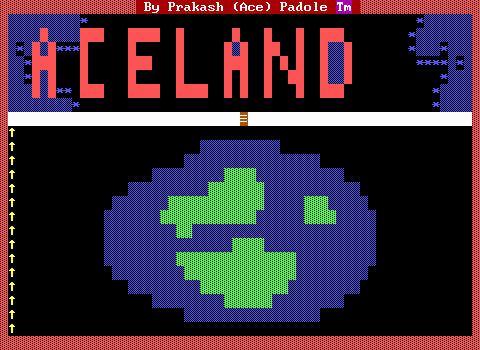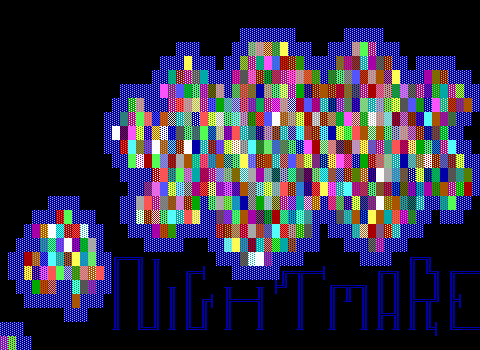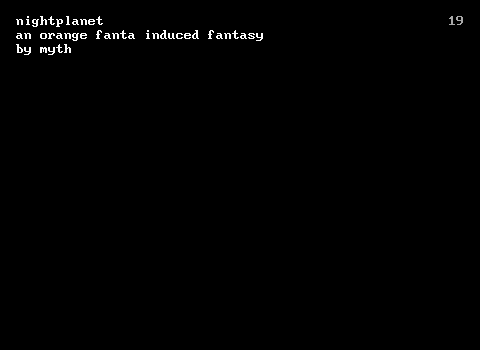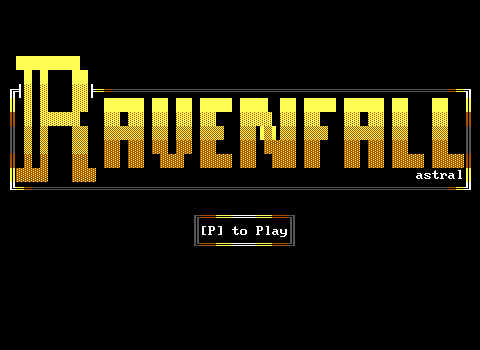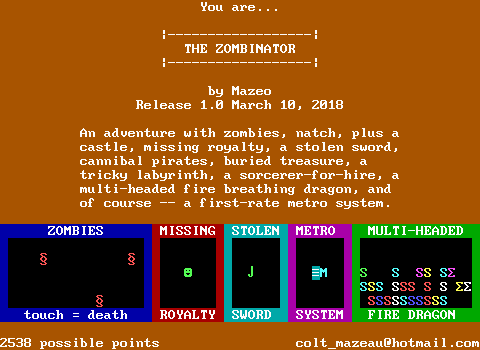Three years ago I was asked what the "must-play" ZZT worlds were and produced a short overview of a few notable releases, authors, and companies in various categories. Looking back on that article, I still stand by the worlds that were selected, and still consider it a good resource for those who ask what ZZT has to offer that are looking to start playing some games. I think it's been long enough however, that such an article could stand to be revisited, both because of what games were omitted from before, and also because that article was written just prior to a massive explosion in high quality ZZT worlds out there.
This new list is a continuation of the previous and in addition to covering some more noteworthy classics also puts a focus on shorter games and some of the resurgent ZZT community's works, almost all of which are of significant quality.
The traditional disclaimer applies. These are my [Dr. Dos's] personal opinions and the categorization is where I felt these worlds would fit best. By no means does an omission mean something isn't worthwhile, nor does a game in one category mean it has no place in another.
Lastly, while all these worlds are freely available, several of them (and other ZZT games) are also hosted on itch.io sometimes with the ability to pay for the downloads in order to support the creators. If a game is on itch an image linking to the game's page will be included. Whenever possible, you should grab it from there as a better way to support the creators via improving their metrics on a significantly more mainstream platform.
Now then. What kind of ZZT world are you looking for?
I want to play a ZZT world... that tells a story
In this category action and puzzles take a backseat to sharing a tale worth hearing. It's rare for a ZZT game to be completely devoid of story, but early on the plots were mostly confined to the introduction and ending sequences. In this category you'll find titles where the story is the most important aspect of all. For many of them it is difficult to get a game over if not outright impossible. Often ZZT games committed to story-first could easily be adapted to non-ZZT formats, yet ZZT offers a unique visual style along with an incredibly simple interface of moving around, interacting via touch, and displaying text with very little in the way of coding required. Not only are story driven ZZT games great introductions for newcomers to playing, but they're also a great format for those new to creating worlds in ZZT.
“Atop the Witch's Tower” by John Thyer (2017)
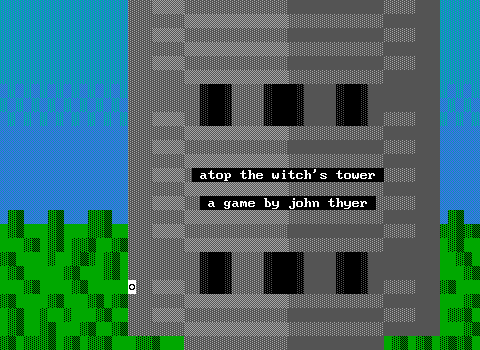
The opening to Atop the Witch's Tower tells you all you need to know: "Your name is MARY. You are a WITCH, and today is a very important day for you. Today you're sacrificing your very first PRINCESS!"
Author John Thyer created the game after being inspired to try ZZT out after learning about it from Anna Anthropy's book ZZT. What begins as an exploration of Mary's tower in order to obtain the components needed to perform the ritual turns into an exploration of the relationship between witch Mary and princess Lucy. This was Thyer's first ZZT world and serves as a great example to learn from with with its simple interactions and item-collecting gameplay focus being easy to look at the internals and easily understand what's going on.
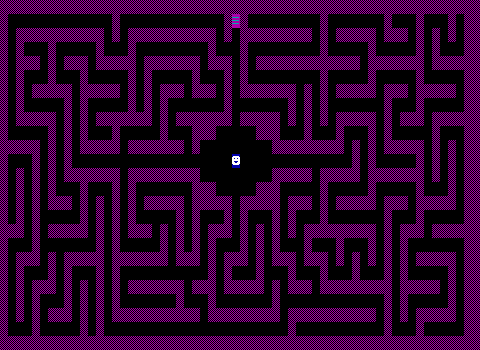
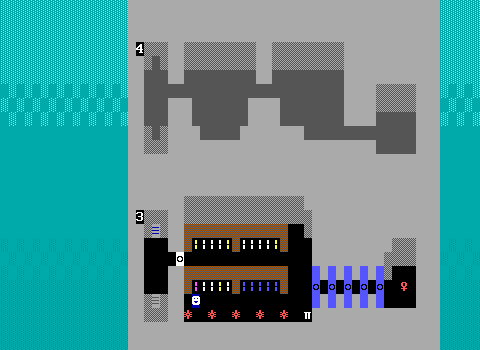
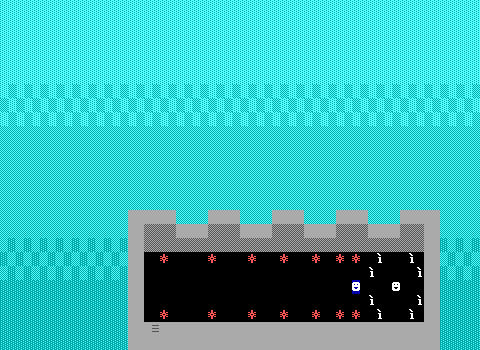
“Big Beast in the Maze 2.0” by KKairos (2021)
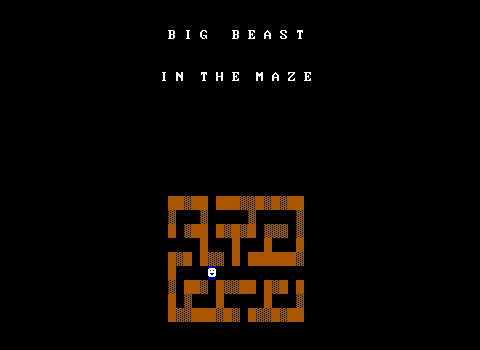
KKairos is an example of a ZZTer from the older days that has returned and continued to develop ZZT games. Many of these, both in the past and present have been experiments with procedural-generation in ZZT and you'll see him show up again later in another category on such work. (Not that he can complete get away from it, as the maze that structures this game was procedurally generated and then hand-tweaked for a better experience.)
Big Beast in the Maze isn't a grandiose feat of code, but rather a tale (that feels like an ancient myth) about a captured rebel whose only hope of freedom is to enter the island's maze, rescue the captured nobles, and slay the beast who lurks deep within. The gameplay is as simple as wandering a multi-board maze collecting treasures, keys, and opening up paths while on the hunt for the beast and your freedom.
Don't let the labyrinthine layout scare you away though. KKairos has done an excellent job pacing things and providing shortcuts which make it quite fun to explore and try to uncover all of the secrets of the maze. Progress comes steadily with the player never having to trek back through empty corridors to unlock a door or free a missed noble.
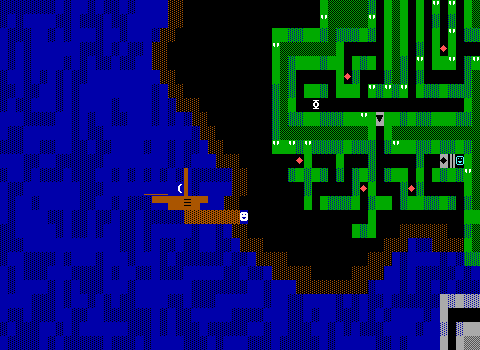
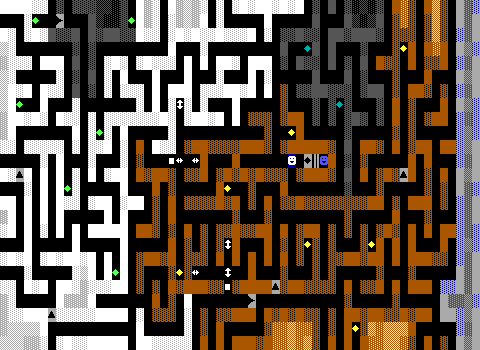

“The King in Yellow Borders” by VRose, WiL (2020)
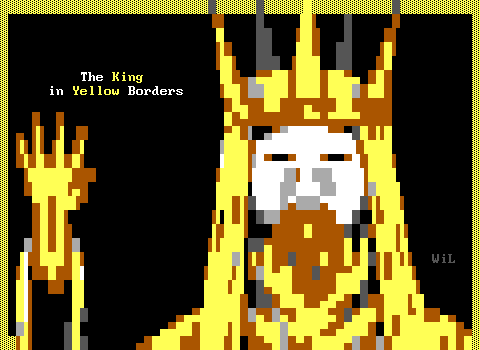
Asie's Reconstruction of ZZT project, released in 2020 was a massive event for the community, quite possibly the biggest it's ever had. ZZT's long lost source code had been recreated by hand to compile into an identical executable. With it came the ability to investigate and solve the mysterious of any unexpected ZZT behavior, but also the ability to build on to it and expand its possibilities.
The nuances of that and the pros and cons of forking ZZT for new worlds versus maintaining compatibility with the thousands of existing worlds was a discussion for quite some time, and while the 3.2 edition of ZZT continues its dominance nearly 30 years later WiL has been more willing to embrace modification with his custom Weave ZZT fork.
When you play a ZZT world made in Weave, you truly don't know what to expect. Each new game released for it tends to implement more new features into the engine resulting in games where anything can happen. The King in Yellow Borders exemplifies this. A horror story inspired, of course, by The King in Yellow in which you will do whatever it takes to serve your king no matter who or what stands in your way.
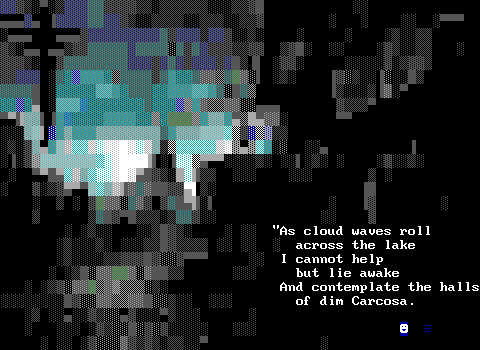
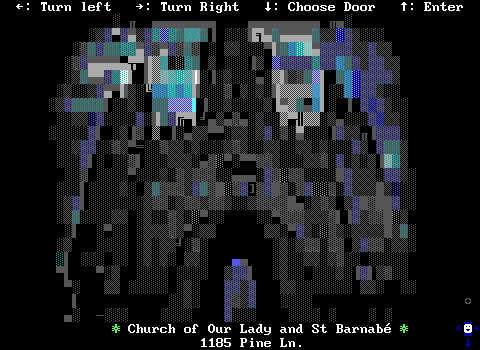
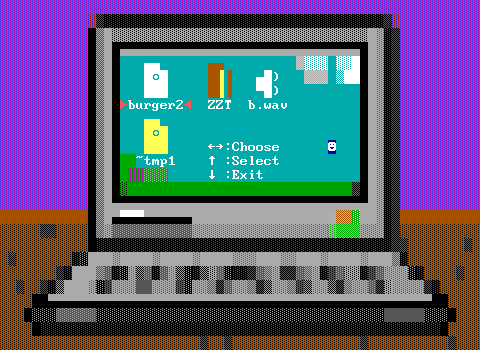
“Star Wench” by Anna Anthropy (2014)
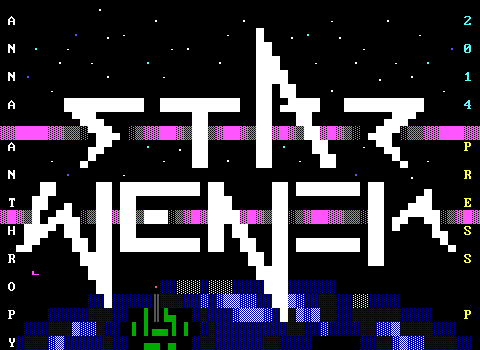
Anna Anthropy, the author of the previously mentioned ZZT book created this game as a stretch goal for the Boss Fight Books series kickstarter. It's another very friendly game for beginners that introduces concepts and behaviors exhibited by elements in ZZT while seamlessly tying them into the story. You won't realize until you play more ZZT worlds after this one that it's a tutorial disguised as an adventure in which Star Wench has to once again embark on a futile quest to defeat the Queen of Space.
Beam down to the Queen of Space's castle and infiltrate her private sauna while dealing with dark storage rooms, having a shootout with security droids, fighting monsters on the holodeck, and avoiding getting poked in the torture chamber.
Content Warning: Star Wench does contain some PG-13 levels of sexual content and minor references to kink.
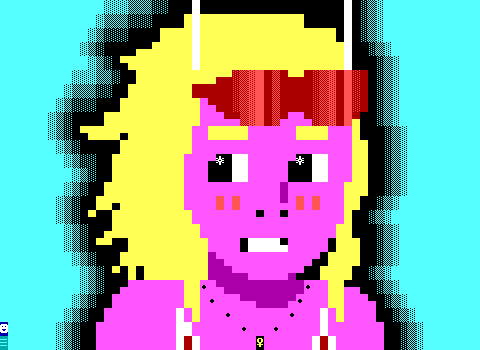

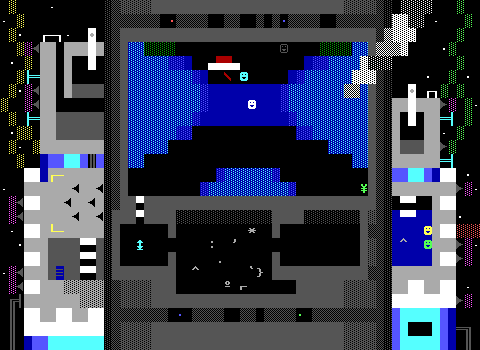
“When There Is No More Snow” by DeadPhrog (2021)

All of these story heavy games so far have taken the form of traditional ZZT games navigated by moving a smiling player from board to board. DeadPhrog's When There Is No More Snow deviates from this and uses ZZT as a medium for a pure visual novel form.
The world tells a "semi-autobiographical" story about a group of teens in rural Michigan, 1995. Abusive parents, bullying, UFO hunting, and the Sega CD all come into play in this incredibly visually distinct story in which your actions will dictate your path and ending. The graphics were created using the image conversion features of ZEdit2 as a base and cleaning the resulting boards up by hand giving the game its extremely distinct look. (With a hint of the dedicated image to ZZT board converter Zimabeing used as well.) A lack of clarity in images is matched by a lack of clarity in the mind of a teenage boy dealing with the opportunity to escape to a better life and what leaving might mean for his crush as well as his sister.
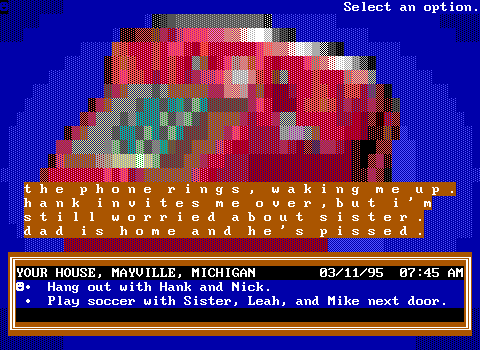
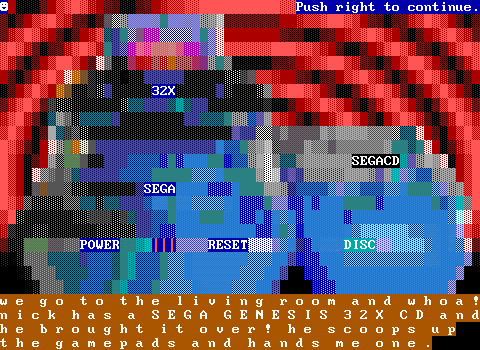

“BUYSO” by RT-55J (2020)
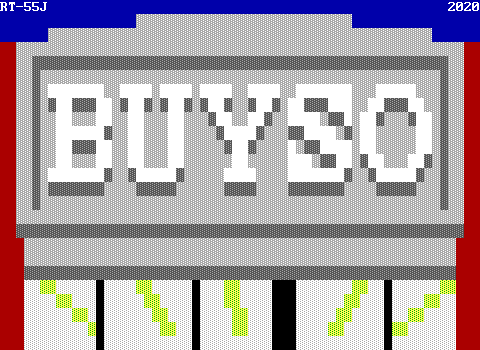
Lastly in this category we have RT-55J's BUYSO which is sure to put you into a winter holiday mood if you're not currently melting like I am. Possibly the shortest of these short stories, BUYSO is a game about being thrifty and purchasing various gifts at a local dollar store. Explore the store and examine all sorts of strange curiosities, but be mindful of your limited budget. When you're ready to go proceed to the checkout counter and pay for your goods before driving off and finding out how your gifts went.
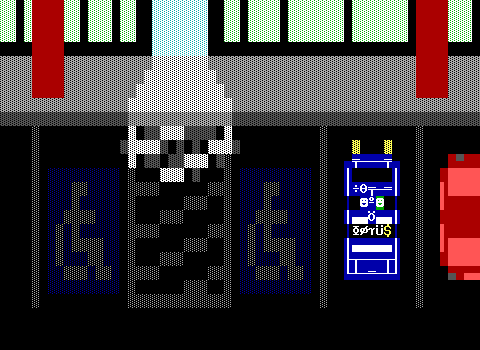
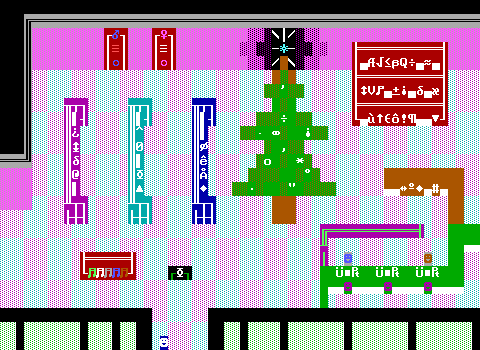
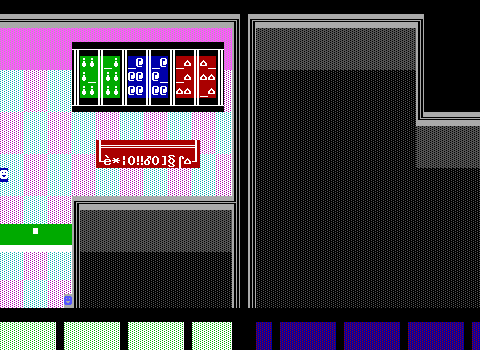
I want to play a ZZT world... that pushes ZZT beyond its Limits
Arguably since Tim Sweeney made a remote control robot in City of ZZT back in 1991 there's been a fascination of seeing what could be pulled off with a such a limited set of tools. ZZT offers six counters, ten flags, 20000 bytes of storage per each of its 101 possible boards, and 151 stats to place on each board. ZZT development is as much about compromise as it is about exceeding expectations. You're not even supposed to be able to change boards without the player dutifully stepping onto a passage or walking off the edge of a board, but that hasn't stopped anybody.
To an outsider, the bag of tricks ZZTers have learned can seem like nonsense: "Pre-#zapped" labels, player clones, statless players, placing unnamed elements, pre-#binding objects, pre-#ending objects, using messages to detect game speed, using the cheat prompt to access an inventory, using stars to tell if a tile is in darkness or lit by a torch... Everything feels like it's all about to come apart at any minute, and there are plenty of goofy ways to do just that. These worlds master the most minute details of how elements interact in order to create unique experiences never before seen.
“For Elise (v1.5)” by Lancer X (2019)
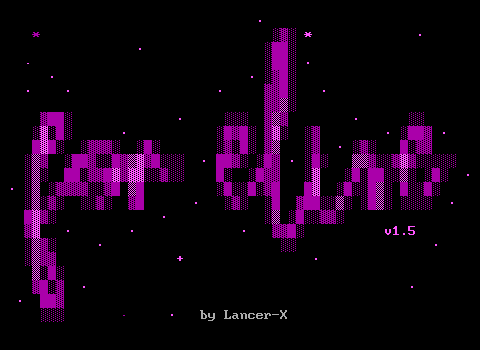
The dungeon crawler is one of ZZT's oldest genres thanks to Sweeney's own Dungeons of ZZT. Over ZZT's 30+ years the genre has moved forward considerably and had an explosion of titles in the late 90s and early 2000s (mostly thanks to Anthony Testa). The Testa-styled dungeon crawler cemented itself as the de facto format of dark rooms representing a dungeon floor, melee focused combat, scavenging for resources, and if you were lucky finding a safe place for a breather from lighting torches while surrounded by fast and aggressive foes. Later, Commodore's Psychic Solar War Adventure would successfully mix random RPG encounters and create a surprisingly console-like early RPG experience.
Lancer-X then took things to the next level. For Elise is the kind of dungeon crawler that everybody wanted to make, but nobody believed to be possible. The game features a twenty floor dungeon designed around turn based combat, converting ZZT's counters like ammo and torches into attack and defense stats. The player fights their way through these floors collecting treasures, completing quests, finding spells, and purchasing new weapons and armor.
The end result is a roguelike sans randomized dungeons which in turn have been expertly balanced to give players variety in how they explore, what they spend their money on, and which strategies they want to employ on their foes. Strategy is a key element compared to the fist-first action of the typical dungeon crawl in ZZT as the turn based nature of the game means monsters move only after the player does allowing for kiting stronger enemies away from a pack or lining up a group of monsters for a devastating magical attack.
For Elise pushes ZZT's limits in ways thought impossible, with nearly every board flirting dangerously closely to ZZT's memory limitations. For those familiar with what ZZT can and can't do, For Elise will quickly be recognized as one of the most impressively coded engines in ZZT and only continue to surprise the player more and more as the game progresses. For those who aren't familiar, they'll find themselves impressed still by the solid design and unmistakable polish that truly make For Elise feel like a standalone game and not one tied to an engine designed to run on 286 machines 30 years prior.
And when you're done, Lancer-X has provided a detailed Postmortem that explains the design that went into the game, how its combat systems work, and the various challenges involved in cramming so much into such a limited space.
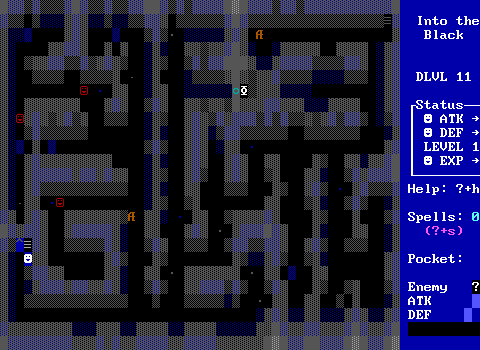
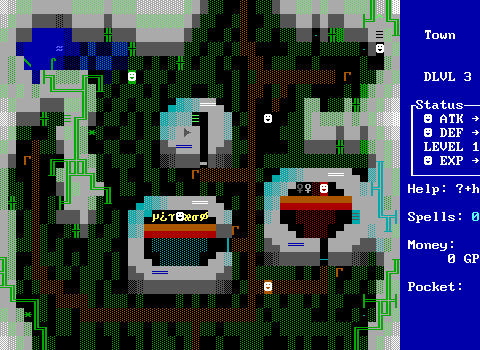
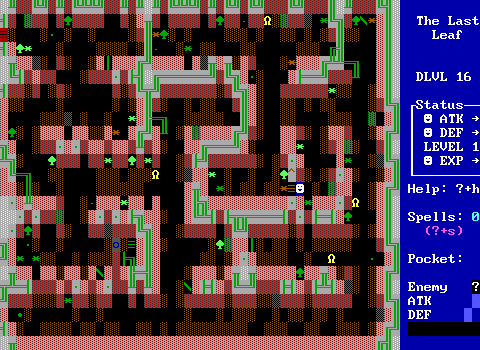
“Computer Dungeon Slash: ZZT 2.0” by KKairos (2020)
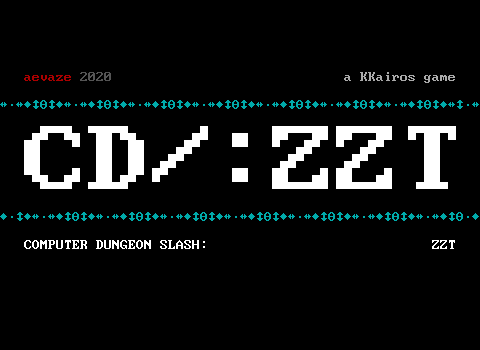
While For Elise covers everything but randomized dungeons, CD Slash takes a stab at elevating randomness in ZZT. KKairos returns to our list with a game that's never the same and explores several methods to create random levels in ZZT with such limited tools. The results are astonishing and you owe it to yourself to use the ?-DARK cheat to watch a level unfold from chaos.
CD Slash is a game about rescuing the villagers of Habeas Corpus from an all-power dungeon that's consumed the town. The gameplay is your basic move-and-shoot ZZT action romp with plenty of secrets to uncover as you map out the dungeon and restore the town to its former glory.
Be sure to check out KKairos's own postmortem on the game explaining how it works, the theory behind creating a solvable maze, and plenty of animations detailing each step of the process throughout!

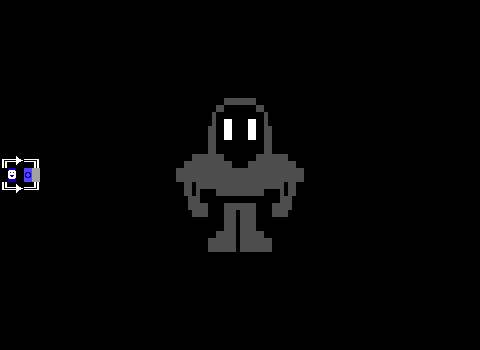
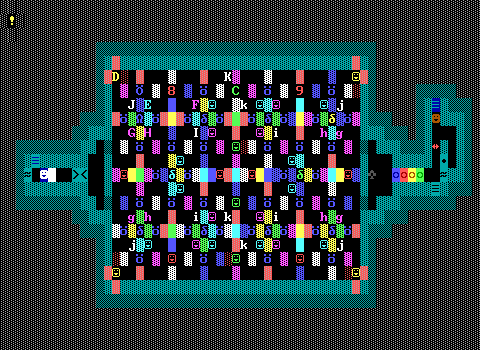
“Small Spaces” by Agent Orange, KKairos, Lancer X, Quantum P., Rabbit Boots, Zephyr, Zinfandel (2019)
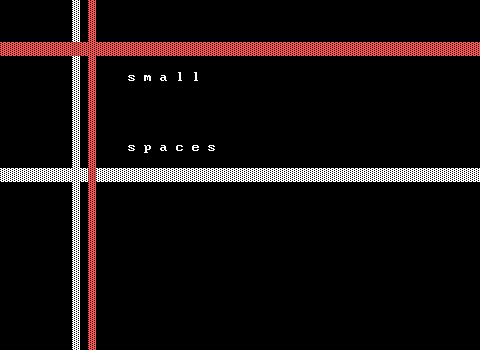
Arguably the game that best demonstrates the resurgence of ZZT is Small Spaces, a collaborative effort with seven authors to its name. Collaborative projects like this aren't a new concept, but even in ZZT's heyday it was difficult to get something like this actually finished.
Small Spaces creates the illusion of the game taking place on a single board, with only the room the player is currently in being loaded. By exploiting an oversight into how ZZT determines where the player is placed the transition from board to board is seamless.
As for the game itself, Small Spaces opens with an impressive opening animation that can only be described as FMV in ZZT using forced board transitions to create a board-by-board and thus frame-by-frame playback. The player must explore these small rooms and find a way out. Each board was selected by an author and then the world stitched together, but these boards aren't just tiny rooms of standard ZZT gameplay. The incredibly small sizes of these spaces (the base size is just 8x3) allows for some extremely unique scenarios to be conceived that couldn't be scaled to the size of a full board due to memory limits and how many tiles can be placed in a single cycle.
Small Spaces ends up as a bite-sized showcase of what ZZT can do in the hands of skilled developers. It's full of spectacle but with care taken to ensure that it's still fun above all else. Just be mindful of the game's bosses, they can be quite challenging!



“Bad Apple!! ZZT” by asie (2020)

I hope you weren't distracted by the idea of "FMV in ZZT" mentioned in Small Spaces. Bad Apple!! ZZT is the logical conclusion of such a concept. Converting the video which has been converted to just about everything else was quite an ordeal. Playing back a "video meant great efforts in trying to juggle frame rate, resolution, and a self-imposed size limit of 400KB to fit within realistic memory constraints of ZZT running on a pure MS-DOS system.
Asie's conversion is one well worth taking the time to see in action even if you may be squinting a little. It also received a write-up not just on how it was created, but covering the history of cinematics in ZZT worlds, the methods used, and their advantages/disadvantages. But you're not allowed to read it until you finish this article because it's going to talk about another game that's going to be covered later in this article.


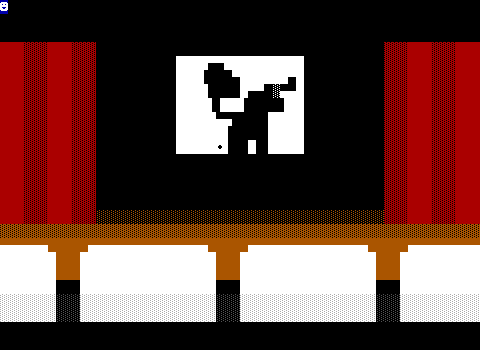
I want to play a ZZT world... with a lot of charm
While story often still plays a strong role in these titles. There is an element of danger contained within and obstacles to overcome. These games show off a wider range of what ZZT can do, and what can often be made by new authors.
“Metal Saviour Bia v1.2” by Agent Orange (2021)
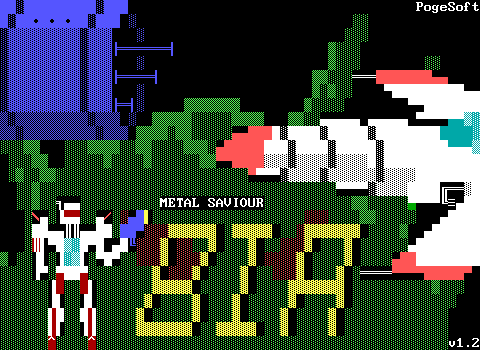
Agent Orange's Metal Saviour Bia is trying to wear a lot of hats at once. The game is designed to fit the style of ZZT worlds released in the year or so after Alexis Janson's Super Tool Kit gave ZZTers the ability to use normally unselectable colors in ZZT via pre-made boards to copy specially colored elements from. It's not uncommon for games of this vintage to start out using only the default ZZT colors before discovering STK and including its offerings later in the game.
Bia specifically aims for that style graphically with its earliest boards barely dabbling in grays and browns before culminating with art that almost entirely consists of visuals impossible to use prior to 1994. The mid-90s stylings extend beyond just the graphics though! Inspired by Robotech, the story explains how humanity's last hope in a war against an alien race comes in the form of an experimental mecha known as Bia which the player, Amy, must pilot in order to turn the tides of war in favor of humanity. The game opens in the Bia's hangar where information is provided by the admiral, an engineer of the Bia, and Amy's girlfriend and liaison officer Lily where things get off to a strong start via a creative animation to launch. The gameplay of Bia comes in the form of some "simple" engines: shooting down enemy ships from a cockpit view, bombing shield generators, and taking out the enemy mothership. These engines are creative and distinct enough from actual ZZT worlds of that vintage, but not as modern feeling as say Quantum P.'s Operation: GAMMA VELORUM series. Agent Orange does a fine job balancing the fun and complexity of these engines while maintaining belieavability that this game could have been released 25 years earlier without being leagues more advanced than its peers.
The conceit works great, providing quite a bit of variety of gameplay in hardly a dozen boards. Fun to play, pleasant to look it, and capturing the spirit of the mid-90s without its flaws, Metal Saviour Bia is a short treat that deserves your time.
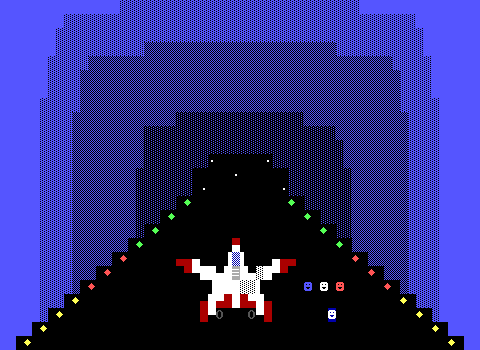
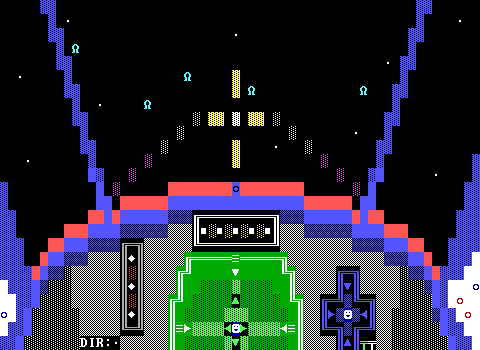

“Invasion ZZT Revision” by Princess Alena (2002)

There were good ZZT games made prior to the Museum's inception, I swear! The focus on modern worlds here is because frankly, they're very good, but with a backlog in the thousands there are also plenty of brilliant ZZT games that have yet to get their due. Invasion ZZT Revision (an update of just plain Invasion ZZT) is probably the best example I could ask for of a game that simply did not get the attention it should have.
This category is for games with charm and Invasion ZZT runs entirely on it. You take on the role of Sam, a young child who wakes up in the middle of the night only to see a UFO land in his backyard and abduct the family pet "Doggy". Sam's journey begins with gathering his friends Andrew and Anne, the only two who would believe his story and escalates quickly from rescuing the kidnapped dog into saving the Earth from destruction.
Full of RPG tropes and inspirations, but sticking to basic ZZT moving and shooting rather than RPG battles, Princess Alena creates an adventure like no other. The graphics stand out from most ZZT worlds with their unusual use of colors, large abstract furnishings in interior scenes, and some wonderful multi-plateaued mountains that look like a ZZT conversion of EarthBound. Leaving Sam's home and stepping onto the overworld where the house is a small speck of red nestled between two mountains and a large body of water with a starry sky paint a sense of wonder that few ZZT worlds could hope to achieve.
But great visuals alone aren't enough to make a ZZT game one for the ages. What makes Invasion ZZT truly memorable is its writing. I have never seen characters so open, honest, and vulnerable. Sam and his crew will regularly connect parallels between the alien invaders and humanity's own ways of destroying the planet. You'll hear about animal testing, good and evil, drunk driving, and pollution. Most powerful of all is a brief scene discussing why sometimes it's okay to be afraid and how brave it can be to admit you are.
The characters develop and grow along the way, facing life or death situations no child should be put in and facing moral quandaries about whether it's right or not to kill those who want to kill them. Invasion ZZT left a mark on me with its story and was all but ignored when the game (and original) were released, but among the modern ZZT community you'll find nothing but love for this game.
Content Warning: Invasion ZZT does contain scenes that involves death. Specifically:
Spoiler Warning for those who have read the spoilers in the content warning:
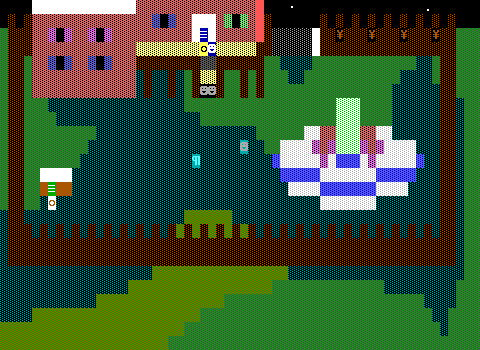
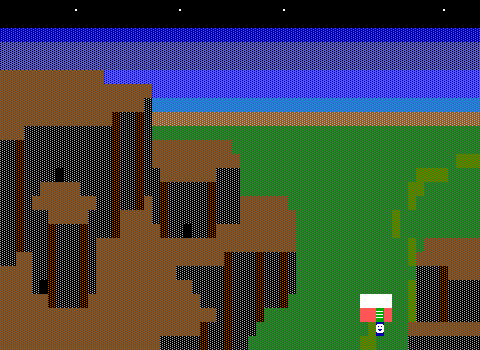

“Cyber Purge” by The Green Herring (2021)
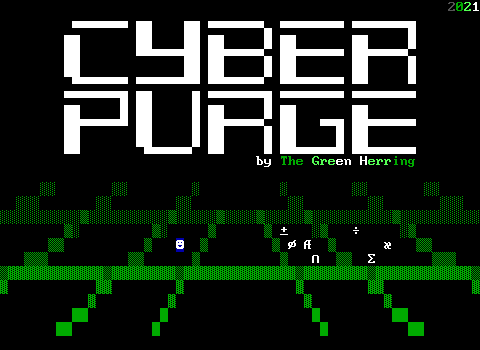
Taking place in "Paradise" a virtual reality world offering near unlimited freedom and flexibility to its users, Cyber Purge tells a tale of a virus being released and spreading chaos throughout the server. It's no mere virus though, as those who attempt to disconnect receive a deadly electrical shock giving the virus a body count.
Desperate to free the captives, hacker Takami Bluesky is given the job to stop the virus, rescue the hostages, and discover who would do such a thing and why. Cyber Purge is a non-linear action game with a great title theme and some very stylish computery visuals that offers up a lot of challenge while demonstrating how those with different needs are more than capable of accomplishing great things with their own gifts. Takami is incapable of using the VR hardware themself, but instead navigates the server using a software emulator, keeping them safe from the virus's Death Seal and making them the best choice for a successful rescue.
The game is divided up into sectors which may be selected in any order which each provide unique gameplay experiences, characters to aid you, and some clever puzzles as well.
Content Warning: Cyber Purge's villain make plenty of reference to the atrocities committed by the Nazis. By default these are now removed to avoid the audience's discomfort with an option to re-enable the original and much heavier dialog.
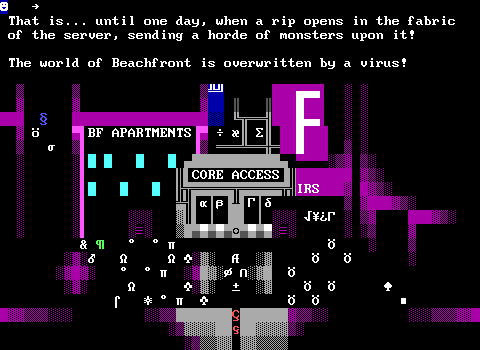
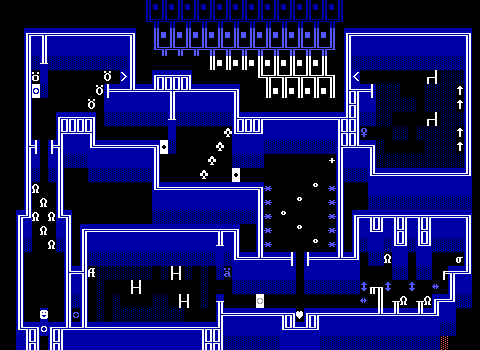
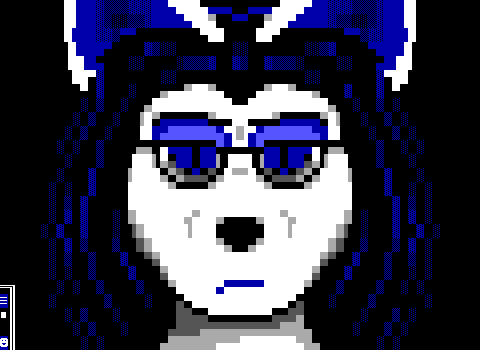
“On A Distant Moon” by Zephyr (2020)
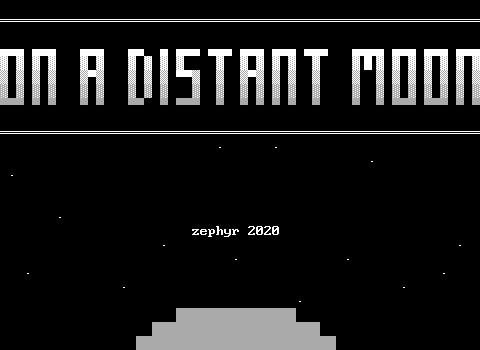
Those familiar with Zephyr's On A Distant Moon before reading were doubtlessly wondering why this wasn't listed with Bad Apple!! ZZT and Small Spaces. So let's get right to that. OADM takes these previous experiments with multi-board cut-scenes in ZZT and takes it above and beyond what was seen in those previous titles. There's no pretending otherwise that On A Distant Moon's most incredible moment is a nearly three minute long seamless musical number which genuinely remains the most awe-struck I have even been (and likely ever will be) when playing a ZZT world. It's an absolutely gorgeous scene that manages to sync sound, lyrics (it's a sing-along because of course it is), visuals, board transitions, and creates an experience unlike any other.
Which is cool as heck, but I didn't want to do Zephyr dirty here by implying that the cinematic sequence was the only merit to the game. Will you be sitting dumb-struck throughout the rest of the adventure? No, but neglecting the rest of the game because of its iconic scene would mean neglecting that there's another great adventure to be had.
The game begins with your ship being dangerously low on fuel and forced to make an emergency landing on a nearby moon. Moments after stepping onto the surface a robot flies by on a jetpack and steals your ship with the help of a shrink ray leaving you truly stranded. It certainly doesn't help when you bungle somebody else's own escape plans by accidentally(?) crashing a drill directly into a research facility. Your task is to work on getting everything needed to escape the moon.
This is done with a mixture of action and puzzle boards akin to the classic ZZT worlds but presented with a more modern graphical style and a rather helpful system providing infinite ammo that make OADM an incredible blend of some of ZZT"s oldest tech combined with its newest.
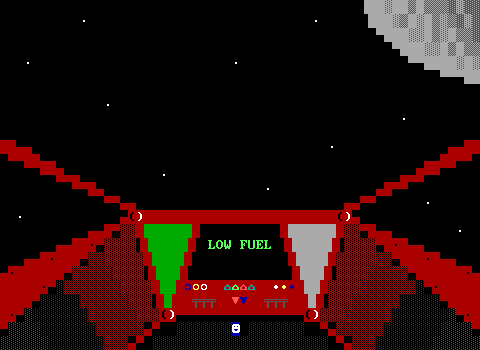
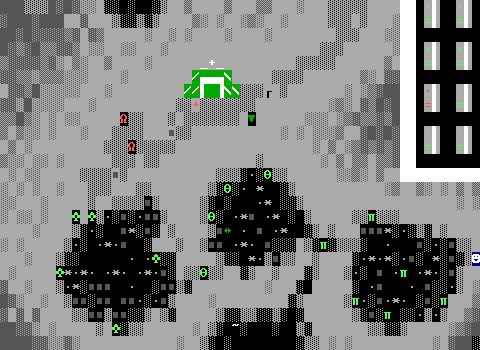
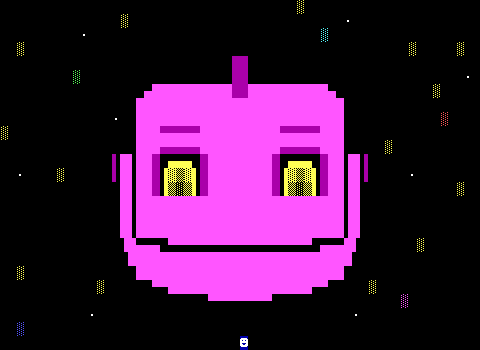
“Overflow 2.0” by Luke Drelick (1997)
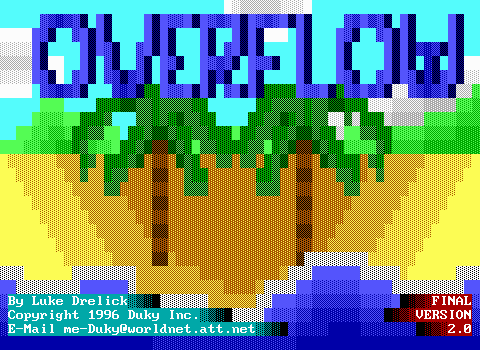
Featured Reviews
Another under-appreciated classic. Author Luke Drelick was a well known name in the ZZT and MegaZeux communities, so I was quite surprised after playing this one that the title didn't seem to be all that popular years later. Unlike Invasion ZZT, the game wasn't completely overlooked having received a Classic Game of the Month Award back in 2000, but a recent playthrough made me realize that this is some must-play material.
Overflow stars Charlie, an adolescent in search of a time machine in order to prevent the Earth's apocalyptic flooding caused by the time-devouring monster Achalon. The game was originally intended to be a Chrono Trigger fangame and plenty of parallels can be drawn between the two. However Overflow isn't an RPG, but a more traditional action/adventure title. Charlie's quest will take him across five regions of the world in order to acquire keycards to access a pirate fortress where a time machine is rumored to be located. These regions can be visited in any order (though leaving before finishing a region can potentially break things so be warned) making the game non-linear.
Gameplay consists mostly of shooting at ZZT's default enemies with a surprising number of object based foes that try to fit the basic enemy mold as well. Each region includes a puzzle or two which provide a bit of respite between all the shooting. Where Overflow stands out is in the quality of its level design. Drelick avoids piles of lions and tigers being placed haphazardly and has one of the best understandings of which enemies would do well within a board's architecture. This alone would be enough to make the title a classic, but it gets even better via some gorgeous artwork. Numerous boards feature lush detailed backgrounds which give the game a beautiful tropical aesthetic which helps drive the player forward to see what will come next.
An abundance of health and ammo (with some shops just in case) and puzzles that are unique but hardly hair-pulling result in what's possibly the pinnacle of classic Town of ZZT styled gameplay. Overflow is a massive game that breaks 100 boards, but plays so smoothly you'll hardly notice the time passing by.


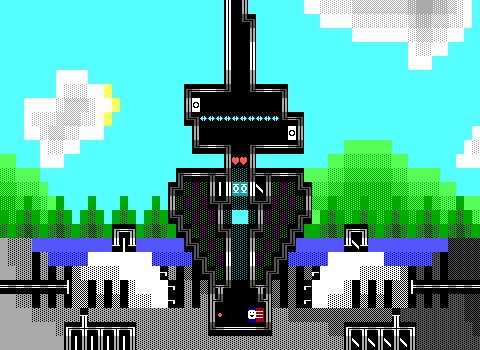
I want to play a ZZT world... to laugh at its absurdities
ZZT's own help files say that the editor is "a tool for creating silly ZZT worlds". These worlds, often unintentionally, live up to that description. Not to say that there's no enjoyment to be had here! These games are usually fairly straightforward but have a bizarre logic to them typically due to the young age of their authors. One of the best things about ZZT is how it empowered so many children with the ability to create games. but In other cases because the authors wanted to make something silly and pulled it off. These games will leave you constantly wondering what will happen next.
“The Hall of the Kunger Binb: Episode 1 EE” by LOVELOVEKITTY, WiL (2021)
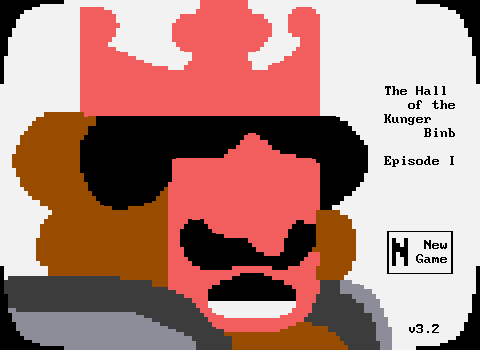
Another WiL game running on WeaveZZT! This one is the most ambitious one yet though. Kunger Binb puts you in the halls of the good king's castle to secretly help a friend find some a rare singing flower that has mysteriously disappeared under their watch. At least, that's how things start. You'll likely spend hours exploring an absolutely massive castle, going bowling, finding secrets, getting sentenced to the dungeons, and lord knows what else. Kunger Binb describes itself as "a love letter to absurdism" and if that sort of thing is your jam this may be as good as it gets.
Of course, even if you're not, there's still a lot to take in. WeaveZZT is as strong as it's ever been here. Palettes shift, objects (and players) move diagonally, and the graphical overhauls make the game approach the upper limits of what an ASCII character set can accomplish.
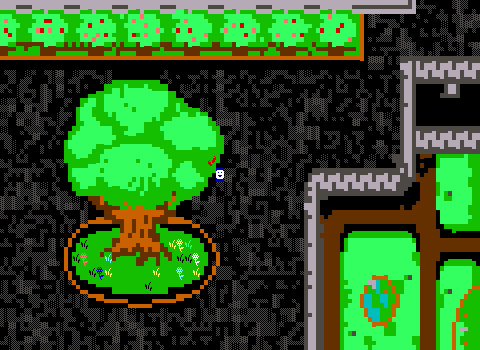
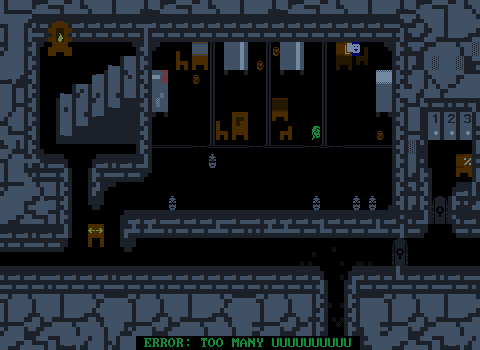
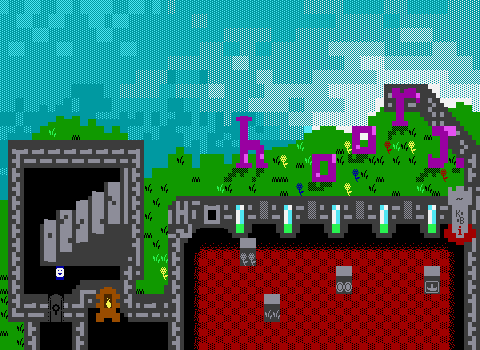
“Secret Agent Chronicles” by Billtcm, Chewy604 (2000)

One of the most wild ZZT games I've ever come across. Secret Agent Chronicles is a spy game in which it seems like every board is presenting something more incredible. Mistakes like walking up to guards are often punished with instant death as your cover is blown. Correct actions are so hilarious to imagine such as pretending to be an inspector to infiltrate a building and making an agreement with the guards for nobody to try and hurt anybody.
You'll be presented with choices like if you want a hat or a monkey. The wrong choice will result in instant death a few boards later. No context is given for why these two options are available. Attempting to describe this game will only sell it short. It's quite simple to get through as long as you make frequent saves to correct your mistakes, but there really aren't any puzzles to solve or challenging fights to get through.
Secret Agent Chronicles provides scenario after scenario of agent Bill's surreal attempts to stop the notorious D corporation's plans. The nonchalant violence and awkward dialog make the game feel so over the top and turns what would be a completely forgettable adventure into an unintentional comedy.


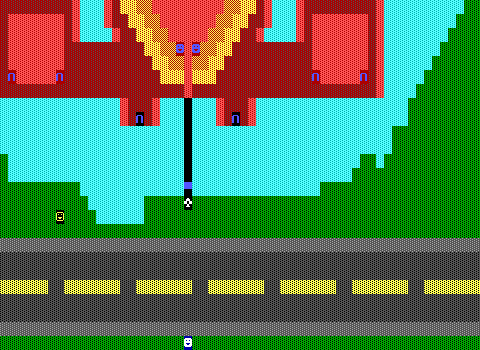
“The Cliff” by John Shipley (1997)
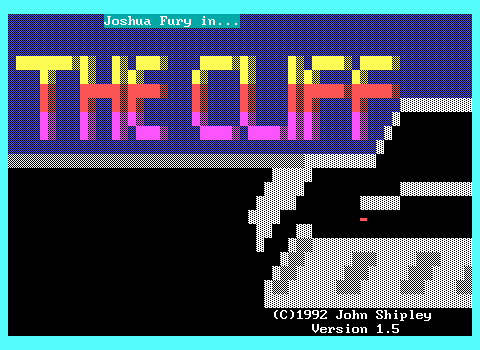
A child's detective game with plenty of goofy writing and strange characters. An excellent title screen animation of a car falling over a cliff sets up the plot of doing what the police are unable to: finding the saboteur and bringing them to justice. Young Joshua Fury explores his town in search of clues which amounts to basically a giant fetch quest as you trade for various items to get other goods and information on the case. Just try not to grounded in the process!
The surreal nature of the game makes it stand out. Every character seems to exist solely for Josh's sake. A man will just give you a gun at a baseball game. Bartenders are desperate for newspapers. Convenient store security systems will diligently shoot to kill. The Cliff creates such an unusual small town that demonstrates the strange creativity of a young child attempting to create a mystery.
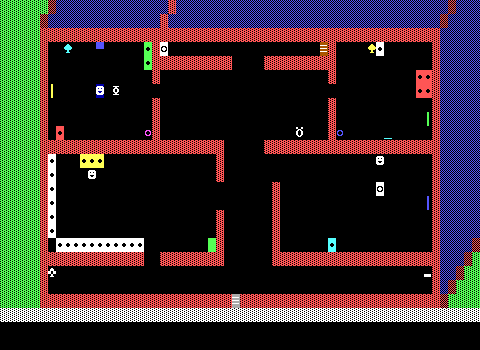
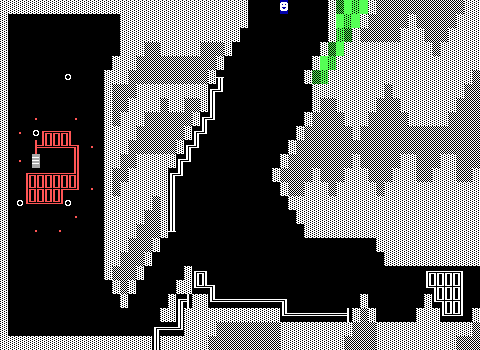
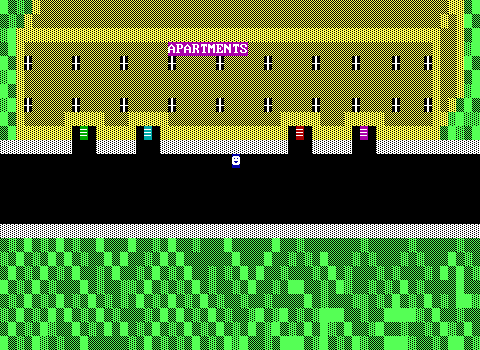
“Baloo Episode 1, The Thunder Road” by Jerry Ellis (1997)
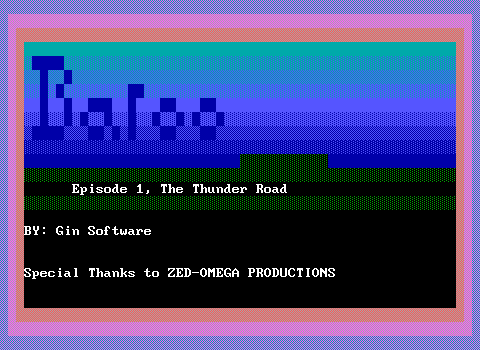
A game starring Baloo the bear from The Jungle Book? Thunder Road was an odd find among numerous previously unpreserved ZZT worlds that caught my interest. These kind of fan games aren't unusual in the least though they tend to be subpar usually and get their entertainment through bizarre writing. The writing is indeed the star here, but not because it's bad, but because it's so genuinely good. This ain't The Jungle Book. No, this is a fangame for TaleSpin featuring Baloo the bear as a pilot for a courier service. It's hardly your weekday afternoon cartoon though with the game opening with Baloo robbing a bank and shooting anybody that gets in his way so he can afford to pay off his gambling debts to Louie the orangutan.
"Oh," you're thinking. "It's 'edgy' and thinks that the pinnacle of humor is a children's cartoon character saying 'fuck'". I get it. I thought the same thing, but Thunder Road is genuinely great. Baloo as a character is a take-no-shit and take-no-prisoners power fantasy that still captures the personality of his character on the show without the kid-friendly aspects. Baloo will rob banks, bust out of prison, hijack planes, and con folks for cash. It shouldn't work, but it absolutely does as author Jerry Ellis captures Baloo's voice so well that it always somehow feels in character. Baloo's role feels like that of a Grand Theft Auto protagonist. He does what he wants without a care and can never be truly punished for any misdeeds. Take this one for a spin and you'll be amazed at how cohesive its world manages to be!
Content warning: The game's writing is so so close to being free of any issues, but alas does fall prey to a homophobic moment in Louie's bar that can be avoided by just not talking to the purple object. Something similar happens at a later return to the bar that can again be avoided by not interacting with the purple object.

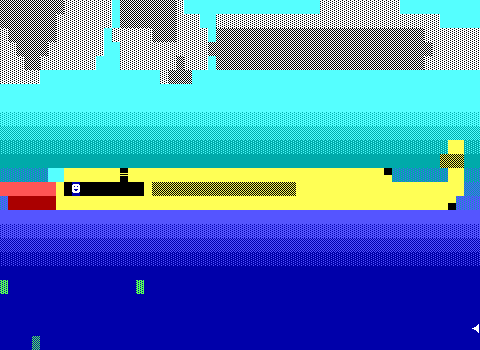
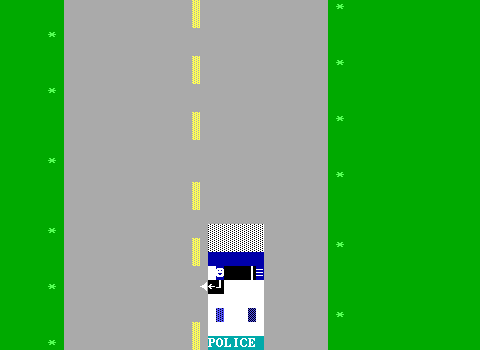
I want to play a ZZT world... that puts a fresh coat of paint on classic gameplay
Sometimes you just want to go on an adventure. Not every ZZT game has be redefine what ZZT is capable of. These worlds are ZZT games worth playing not because of what they were able to make ZZT do, but because they're games worth playing that just happen to have been made with ZZT.
“Town of ZZT Remix” by DarkMatt, The Black Keys (2021)
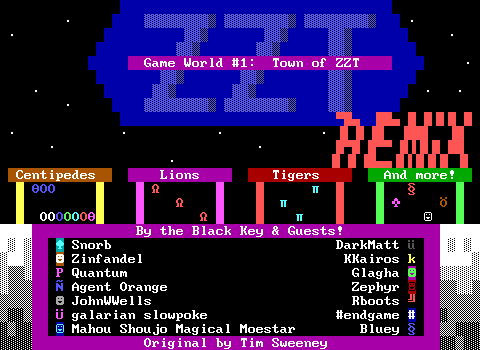
A collaborative community effort released just in time for ZZT's 30th anniversary, Town Remix's lengthy author list makes even Small Spaces blush. This time the fourteen ZZTers doled out the boards in Town of ZZT and put a modern spin on them. The result is a great homage to the game that started it all with some outright fiendish puzzles, great looking visuals, and some very clever coding. Town Remix works so well because it's not trying to be a replacement for Town, but a celebration.
You'll still break out the ZZT bandit from jail, dodge a downpour of bullets as you cross the three lakes, and jam with the jazzman. Care is taken to capture the spirit of the original and not forget the roots of the original game. There are plenty of twists to the original designs that keep things fresh so while knowing your way around Town is helpful you'll find yourself constantly asking what will happen on this board. Town Remix was a great way to start of ZZT's 30th anniversary and a sequel remixing Caves is well underway giving you something to look forward to after this one for sure.
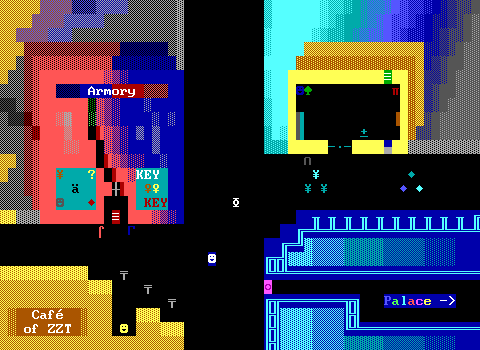
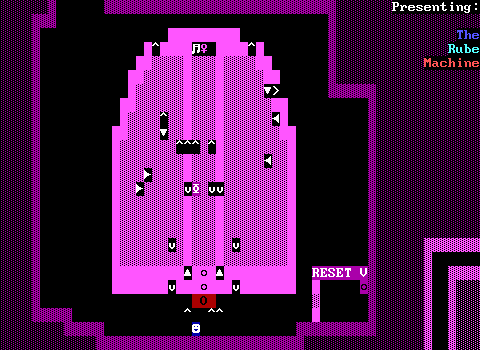
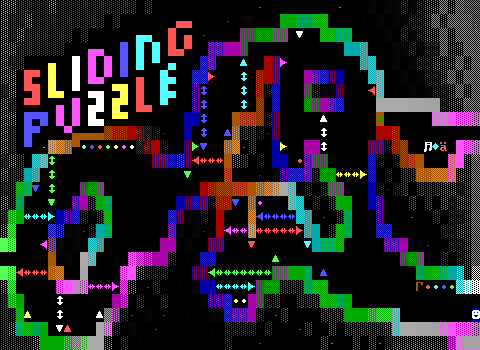
“Yuki and the Space Show” by Zephyr (2019)
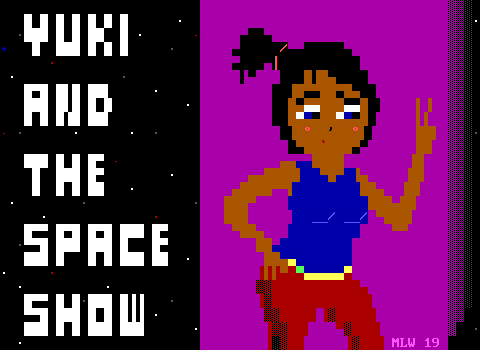
Featured Reviews
- Featured World: Yuki and the Space Show by Dr. Dos
In Yuki and the Space Show Zephyr takes a series of single board challenges that on their own wouldn't have anything to do with each other, but are packaged into a great theme of being challenges to conquer on To The End of Space-Time, the hottest television program in the galaxy. Yuki's cat has been abducted and in order to win both her and the cat's freedom, she'll be forced to participate in greater and deadlier challenges.
Zephyr's abilities are really shown off here with no challenge being a slouch. Each challenge is unique with little bleed-over as Yuki makes her way through this action-puzzler where each room feels like it'd be worthy of handing the player a purple key in Town afterwards. Keep your eyes peeled as you play though, and you might stumble upon an alternate ending...
One thing to note though, this game does expect some knowledge of a few of ZZT's quirks which can be unintuitive to players unfamiliar with ZZT's mechanics. "The Space-Time Machine" challenge in particular can be obtuse to the unfamiliar. Don't let that scare you away though! If you find yourself really stuck you can consult the two part livestream and get some guidance. In a year that had numerous fresh and innovative hits Yuki and the Space Show stands out for its great visuals, smart levels, and tidy thematic packaging that make it my personal favorite ZZT world for 2019.
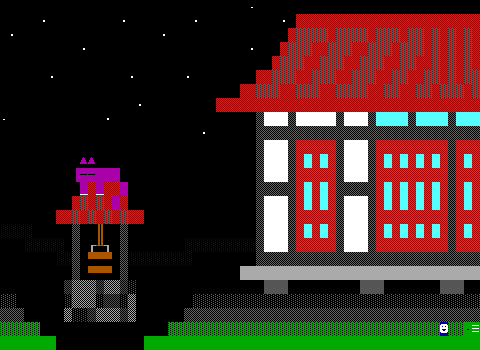
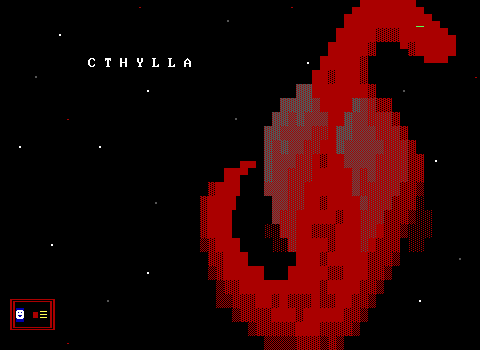
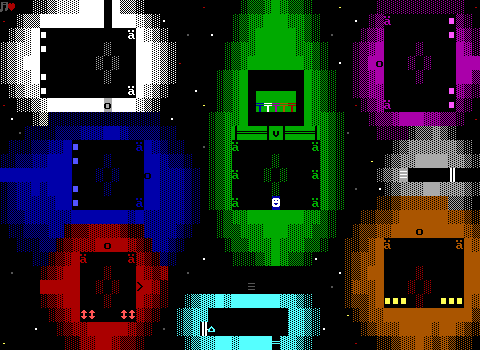
“Daedalus' Obelisk” by Darren Hewer (2019)
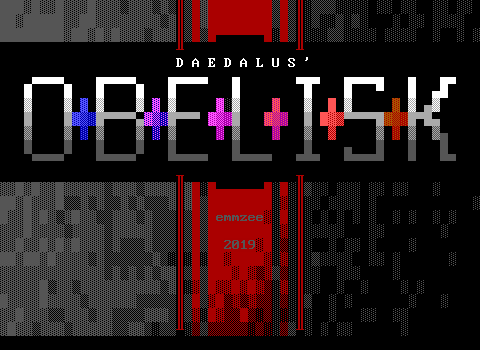
Featured Reviews
- Featured World: Daedalus' Obelisk by Dr. Dos
Is this "classic gameplay"? That's a tough call. Darren Hewer returns to the ZZT scene for his first release since 2007 that manages to pull off an alternative style of gameplay to traditional ZZT worlds, but without using an engine? Daedalus's Obelisk is a platformer in ZZT which may sound unusual to those with limited experience, but it's far from the first. Where Obelisk makes its mark however is that the player isn't sitting in a corner pressing objects.
No, this side-scroller isn't object-powered but hydro-powered. All the game's stages use a sideways view of the board in which the player is blocked from moving down by the ground and up by invisible water, requiring the use of ladders to ascend and descend between levels. It sounds clunky, and I wouldn't be surprised to find an early ZZT world awkwardly doing this and being terrible to play, but Hewer is no novice. Having been creating ZZT games as far back as.... oh, 1991, Obelisk's great level design makes a seemingly janky concept into a very unique experience with not a single other ZZT world I could compare it to.
All of this sideways dungeon crawling revolves around a story about being whisked away from our own world to the world of Dagda whose occupants are being held under siege by the evil wizard Daedalus. Daedalus has taken oven the land, poisoning its lands and watching from, well, his obelisk. The game is semi-nonlinear with most areas accessible from the start but a few restricted behind finding certain items in other areas. Its overworld strikes a balance between being large enough that you're genuinely exploring it yet small enough that it never takes too long to get from point A to point B.
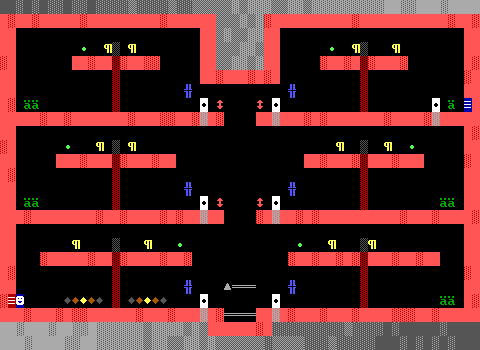

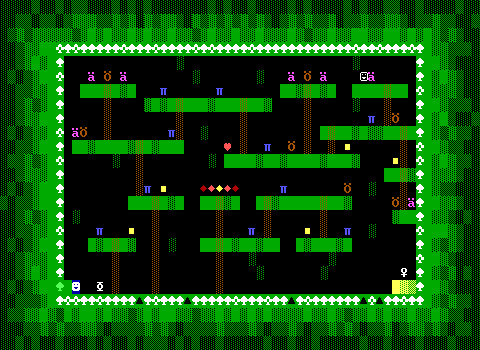
“Faux Amis (v1.02)” by Rabbitboots (2019)
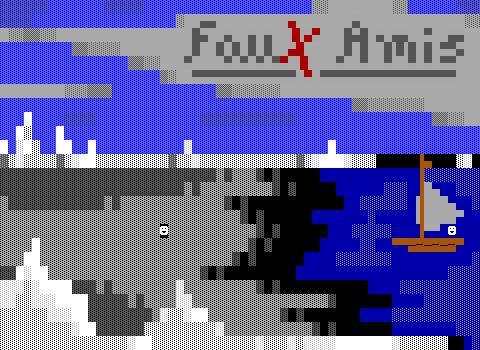
Featured Reviews
- Featured World: Faux Amis by Dr. Dos
One part adventure, one part puzzle. Faux Amis is Rabbitboots's game that showcases just how much a ZZT world can be polished until it shines. Your sailboat has sunk just off the coast of a strange island with stranger occupants. To escape all you have to do is take the next ferry off the island. That ferry is scheduled to show up once every six months and will be arriving in... six hours. Oh, and you'll to pay the fare: 200 gems.
What follows is a quest to raise the money doing anything you can to help the island's residents out for some cash. Time advances as the game progresses and is represented both on a giant grandfather clock in the center of town but also in the movement of clouds and sun in the sky. Light and shadow change as the clock ticks with each quest completed giving a sense of time passing that goes far beyond the usual fare for a ZZT game.
Of course, as you make your way across the island you'll stumble onto more and more of its oddities that make the need to leave ever more pressing. There's something off about Fowe island...
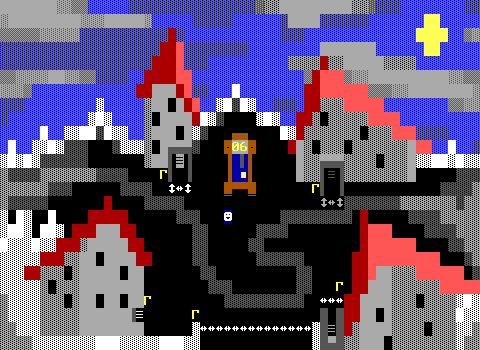

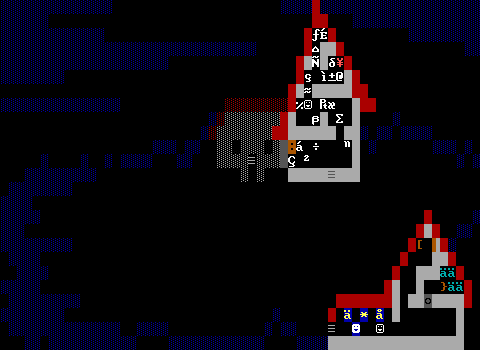
“Evilstania” by WeaselFeathers (2012)
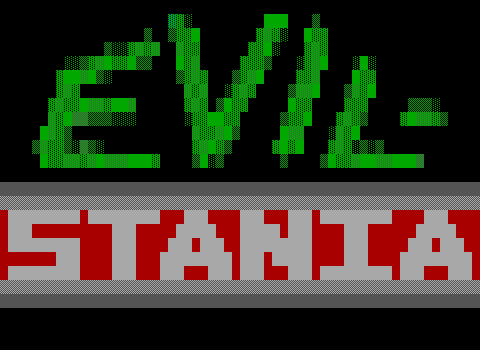
Featured Reviews
- Featured World: Evilstania by Dr. Dos
Dungeons dungeons dungeons! Is it my personal bias showing here? Sure there's For Elise with its unique turn-based style. Yeah you can play Computer Dungeon Slash: ZZT and get random dungeons full of lions and ruffians. Is that not enough? Well, no, because I've still got another dungeon crawler that's absolutely worth your time. While those other two games come up with their own distinct style of dungeon-crawler, Weaselfeathers's Evilstania takes the more traditional approach of putting the player in a dark labyrinth and having them shoot their way past object-based enemies.
Though more akin to the classics of the previously mentioned Anthony Testa this too takes the well established dungeon crawler and takes things to a whole new level. Weaselfeathers does this not with any brilliant new techniques, but by just making some damned good enemy designs. Without a doubt the biggest flaw of this genre in ZZT is how enemies rarely feel all that different. They move randomly or towards the player, and if they get close they'll attack, but Weaselfeathers codes up a bestiary that I feel is entirely unmatched to this day. There are strategies to dealing with these foes and you'll learn to carefully step your way through the fortress of Baron Von Dread in your quest to rescue Princess Girlfriend.
The tongue in cheek story may give the game some humorous underpinnings (all the art boards will bring a smile to your face), but the gameplay is deadly serious. Your character may be well armed, but they're rather defenseless starting with a maximum of 20 health and abiding by the usual rules of 10 damage per hit. Resources have to be carefully tracked early on to buy torches, ammo, rest at the town's inn, and purchasing a variety of equipment. After making it out of a branch of the fortress alive you'll find yourself stopping to consider whether its best to upgrade your armor for more health, or maybe save up for a pass at the inn to make healing free. Money is tight and upgrades are varied enough that you'll end the game without acquiring everything providing replay value as additional playthroughs offer an opportunity to try a new focus in your gear.
The enemies though are truly unmatched. Advice can be purchased in game on how to best approach each one and it's actually money well spent. You'll find yourself seeing a specific enemy in a group and suddenly trying to focus entirely on them before the enemies thin out enough that they can get close and become a real threat. Boss fights are equally devastating and until you learn enemy behavior and when it's safe to strike, you'll be in constant danger. While the other dungeon games in this article stand out for what they did differently, Evilstania shows that you don't need to teach an old dog new tricks to create a memorable experience.
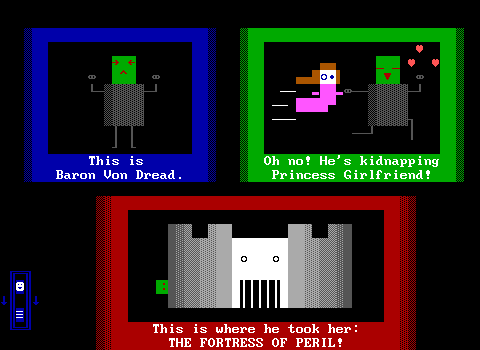
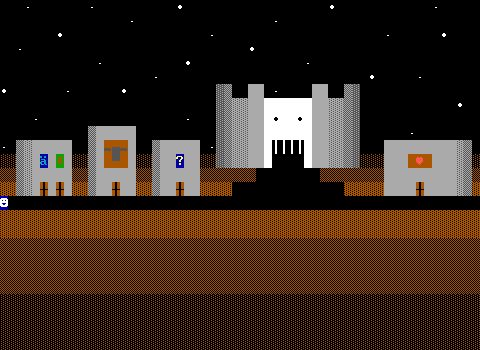
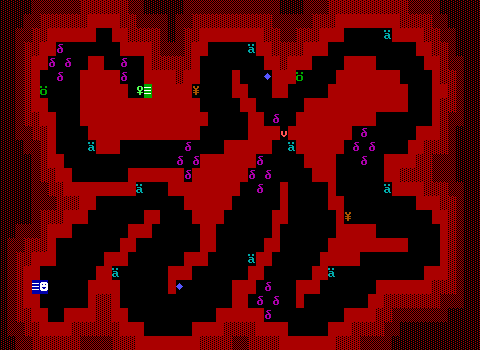
“Dark Citadel” by verasev (2020)
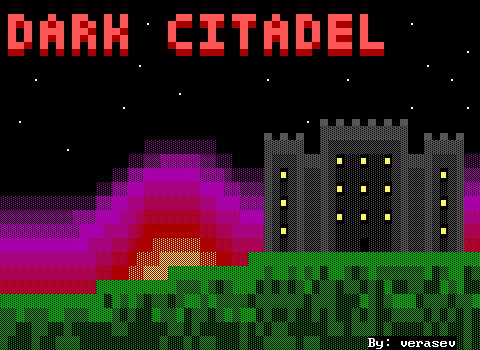
I can't believe I forgot this one! Stop me if you're heard this one: what if there was a ZZT game that was a dungeon crawler?
This time verasev is taking the classic genre in a more action based direction. While Evilstania is all about a slow and measured approach through its dark dungeons, Dark Citadel is in contrast a lot brighter. The game opens with a choice of two different tomes, one of elements and one of spirits. These determine the spells the player has at their disposal, all of which are represented via how enemies react when shot with one active.
The dungeons are more open and structured compared to the move organic caverns of most dungeon crawlers. This gives verasev an opportunity to fill the citadel's halls with some great decorative objects in turn making this one of the nicest dungeon games to look it. The combat system involves hunting down the best rune for the foes at hand while watching your mana. Magical potions can be consumed to refill your health and mana with the player limited in how many they can carry at one time.
Dark Citadel ends up with some great visuals, strong replayability, and a core mechanic that makes it stand out from your typical 90s dungeon crawl. The lack of dark rooms and the addition of a few puzzles along the way make this one well worth playing even for those who typically shy away from the fantasy dungeon crawler genre.
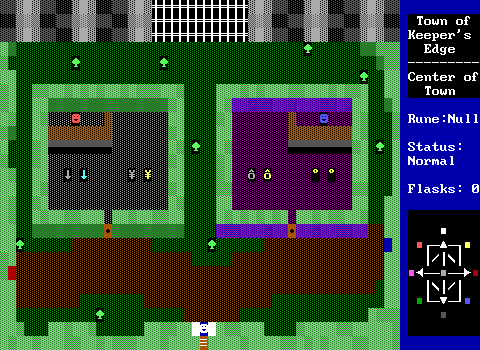
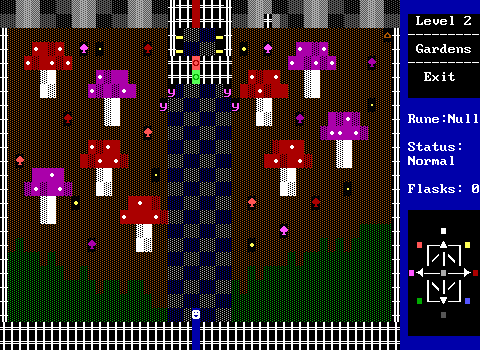
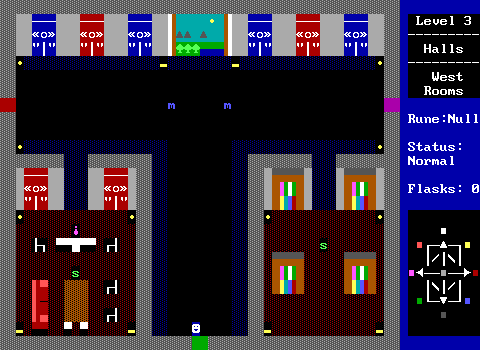
I want to play a ZZT world... and I've got no time to spare!
Sorry, I didn't mean to make this take so long.
We're all busy people, and if you're brand new to this ZZT thing, you might want to just play something yourself and not have to commit a whole lot of time. These worlds are fun to play and quick to beat. If you just want to play some of ZZT's history without making a commitment, here are a few popular choices that will hopefully leave you wanting to check out more!
“Fred! Episode 1: Space Fred! (v2.00 Gold)” by myth (1995)

Myth's Fred! series of games are classics of the mid-90s. While the second game is one of ZZT's largest, this first game is self-contained and can be beaten pretty quickly. Aliens have landed in Fred's back yard and it's up to him to stop the Earth from being taken over as well as to save his sister Fredetta.
Beginning with a humorous exploration of Fred's house and quite possibly the best toilet joke in ZZT history, you'll soon find yourself aboard the evil Captain Snargon's ship gawking at the bizarre alien visuals with (reasonable) flashing colors and unusual electronics abound. A trip through the arboretum provides purple forest and greenish water as well giving the ship as a whole a very cool and indeed alien look that definitely was a high mark of the era. Most of the action consists of just shooting at aliens that happen to be ZZT's lions which make this a quick one to get into and enjoy without anything too complicated. Fred! is just one of those ZZT games assumed to have been played by everybody who sticks around due to its short size and memorable environments that make it hold up quite well to this day.

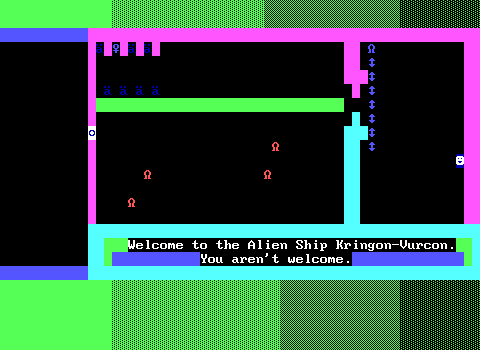
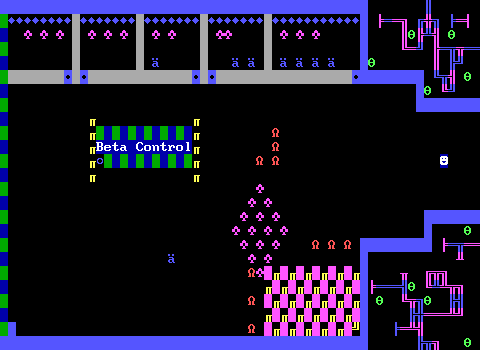
“Merbotia” by Sonic256 (1995)
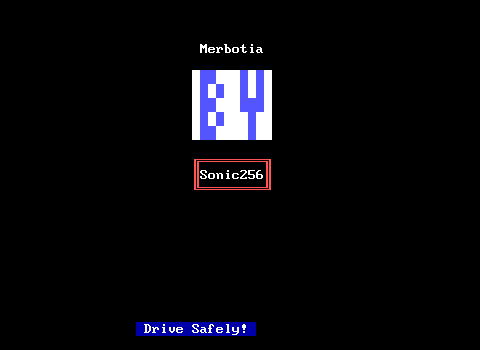
Featured Reviews
- Classic Game of the Month Review: Merbotia by Hydra
- Featured Game: Merbotia by Commodore
Another mid-90s classic! Merbotia will win you over before you even hit "P" to play as its title screen music is easily one of ZZT's most iconic themes. Merbotia is Sonic256's only known release, but through this game alone became a prominent name. You have been taken from Earth to the land of Merbotia in order to defeat the evil warlock Quatsch. It won't take too long to do just that, but afterwards the Earth is slated for destruction (after all, it was created entirely so you could be born) and it's up to you to save it! Things go from fantasy to sci-fi as you board the ship and replace a bow and arrow with a buzzsaw launcher (beating Unreal's Ripper to the punch).
What keeps Merbotia memorable beyond its opening music is its sense of humor that left quite a mark on its audience. It's been how many years and I still think about the bed running away again and killing Jeffrey Poole. I swear it's not nonsense. (I mean it is.)
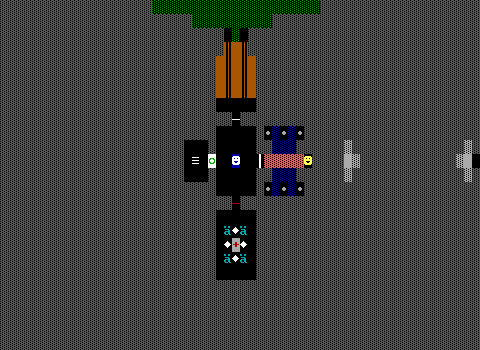
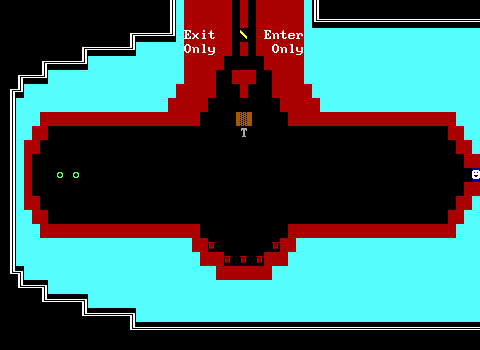
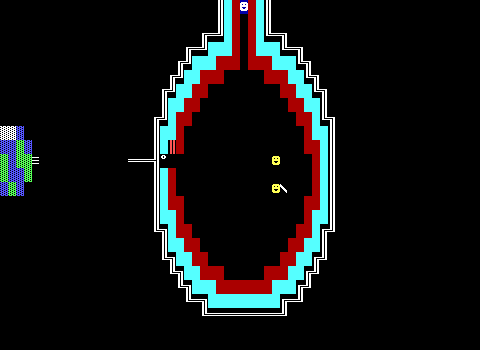
“Kerfuffle!” by KKairos (2019)
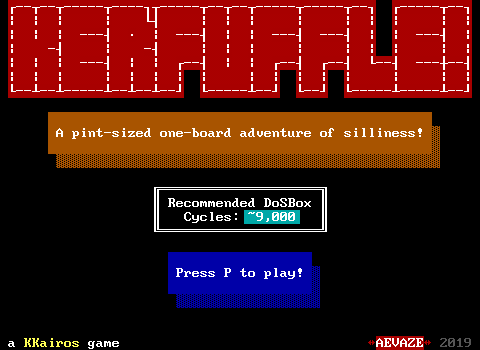
Shorter is often better these days with plenty of modern releases that are more interested in telling short stories than epic sagas, but KKairo's Kerfuffle! really aims to be short! The game takes place on a single board providing a score-attack action game where getting hit means a trip back to the beginning of the board. ZZT's high scores rarely come into play as few games offer any real incentive to replaying them for a higher score, but the arcade design of this one makes it the sort of thing you can absolutely find yourself trying to chase a bigger number on. Small spaces (no, not those Small Spaces) lend themselves well to challenging action where one false move means no more score and a trip the start.
For those not chasing scores there's still fun to have and checkpoints are included so you don't have to start entirely from scratch when you're hit. Whether you're playing a single run or trying to set a new record, there's a solid design behind everything here that makes an excellent showcase for ZZT action that's quick and easy for a newcomer to pick up and play.
This game also predates the release of asie's Zeta and as such suggests cycle counts for DOSBox for a smooth experience. These can be ignored and you really shouldn't be using DOSBox for this or any ZZT games these days (potentially barring Plankton: Undersea Adventure).
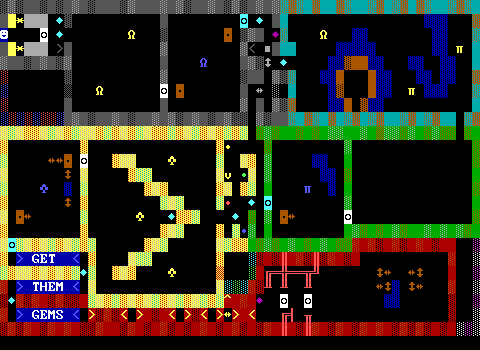
Honorable Mentions
As always, a list like this is hardly exhaustive, but should get you going. If you find yourself enjoying anything in particular here, don't be afraid to look at what else that author has made! But if you're still looking for more specifics, here's a few games that surely deserve a bit of the limelight as well!


